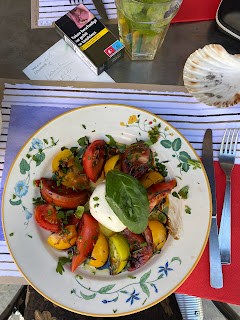The Culinary Triangle
Claude Lévi-Strauss, French anthropologist, noted when he observed and recorded the eating habits of tribal societies of North and South America in the mid-20th century. Though he saw that most cultures categorized foodstuff into three phases — raw, cooked, and rotten — he also observed that those categories were subject to interpretation and that there was no reason any two communities would come to the same terms. In The Origin of Table Manners, the third volume of his wide-ranging Mythologiques, Lévi-Strauss illustrates the fluidity of these terms with examples from his native France: Italian restaurants, he claims, widened French receptivity to eating raw vegetables without an acidic vinegar dressing; for a more dramatic example, American soldiers landing in Normandy during WW2 occasionally burned down cheese dairies, mistaking the smell of ripe cheese for that of corpses.
Lévi-Strauss placed the three phases of food at the points of a triangle to emphasize both the opposition between different stages and the degrees between them. If you look at the diagram from the point of view of raw food, you might see the other two points as the outcomes of two different transformations: Cooked food is the product of cultural processes, such as the application of heat or tools; rotten food is the product of natural processes, time and decomposition. Truly raw food, for Lévi-Strauss, is unmarked by human intervention or decay; even the uncooked foods we eat have been washed, peeled, sliced, and prepared for human consumption. But though a chopped salad and a roast chicken might both appear on the dinner table, they occupy fundamentally different places in our cultural imagination.
 |
This visual tool permits a more nuanced framework for cultural comparison than an us/them contrast: We can perceive the French and Italian methods of preparing uncooked vegetables as points along a scale of cultural mediation, different in degree rather than kind; we can explain that the American soldiers had a wider conceptualization of the rotten than the French fromagers.
Of course, mapping foodways with this tool is just the tip of the triangle for Lévi-Strauss. Because the categories of “raw,” “rotten,” and “cooked” are culturally constructed, thinking about food in this way leads us into the realm of metaphors and ideas: The oppositions between points on the culinary triangle frequently point to other clusters of oppositional concepts in a particular society’s beliefs and practices.
“Cooking is a language,” writes Lévi-Strauss, “through which society unconsciously reveals its structure.”
 |





Comments
Post a Comment